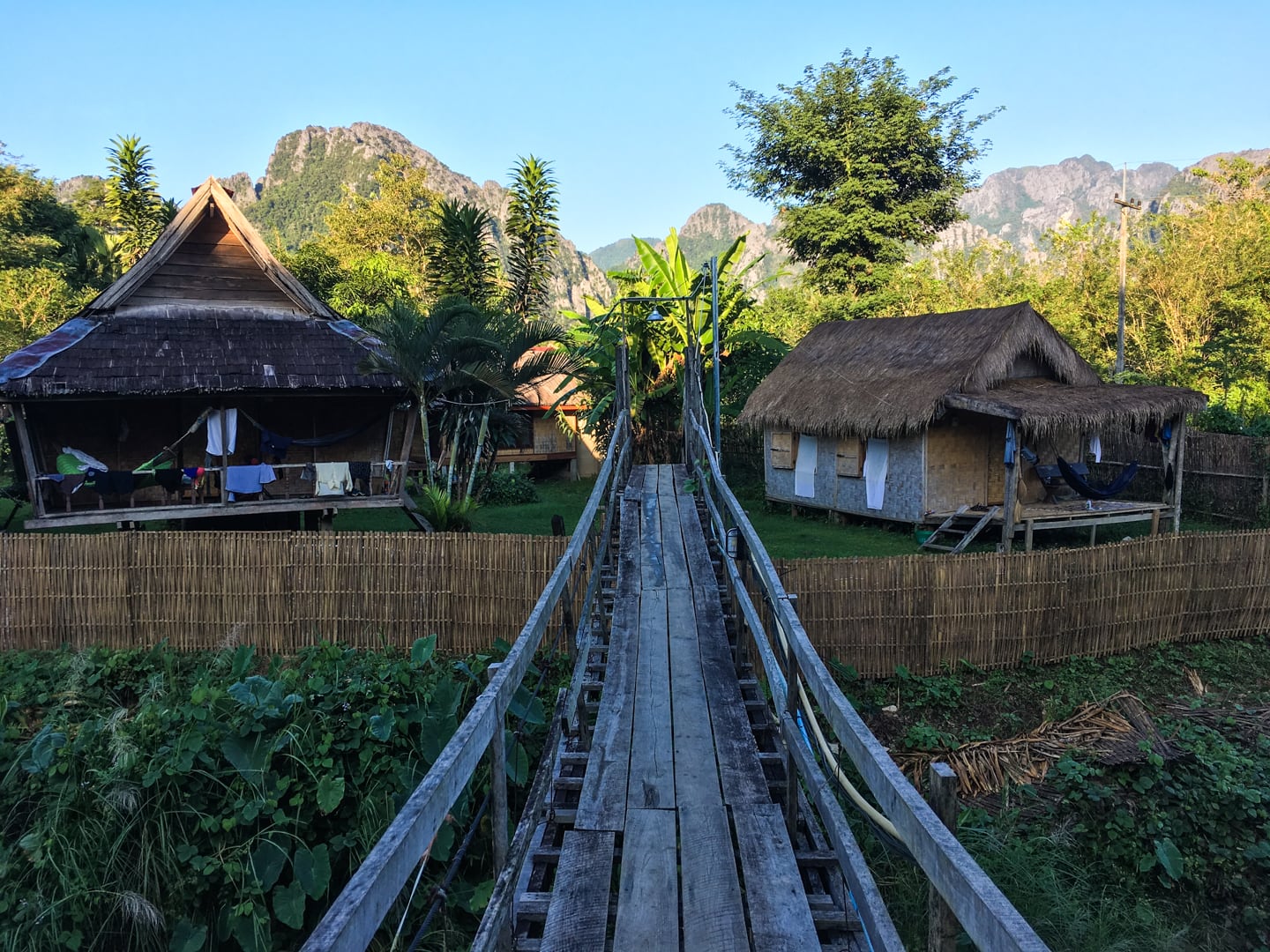
The world is changing. For some, for the better. For many others, not so much. Measuring progress in itself is tricky and reflects the values of the measurer. If you measure change solely in terms of economics (GDP, GNI, etc.) it would appear things, on the whole, are improving across the globe. If you look at social and cultural indicators like social cohesion, migration, and ethnic conflict, however, the picture isn’t so rosy.
And then there’s change from travelers’ perspectives. There are many visitors to Laos who see the current wave of changes as a net positive—trendy new hotel blocks with trendy new cafes and restaurants popping up in all the tourist corners. “How great!” these visitors say, “We can have many of the comforts of home in a strange and foreign land.” Such visitors bring money (and, more significant, the willingness to spend it—lots of it) to small communities like Vang Vieng. And, undoubtedly, there are some in this community that benefit [financially] from this increase in tourist spending.
But most people in Vang Vieng and communities like it, don’t. Don’t ever fool yourself into thinking that a farmhand in Laos is going to find meaningful and lucrative opportunities in the tourism sector overnight. It takes a great deal of investment in individuals to bridge skill and knowledge gaps—competition is fierce and jobs are scarce. Additionally, such jobs take the brightest, most-skilled, and most ambitious workers away from other sectors within the community, and eventually you begin to lose the social and cultural essence of the community—the very thing that makes places like Vang Vieng (and Laos, as a whole) so special.
With increased tourism spending, you generally see a rise in the price of commodities in and around the community. More significantly, you’ll inevitably see a steep increase in the value of property—and an even steeper increase in rent. Not a big deal for those who stay on a farm away from the tourism center, but a huge deal for current tenants and those who leave behind their former livelihoods to move closer to the city for work in the tourism sector.
So, what does this all have to do with Champa Lao Bungalows?
Read on!
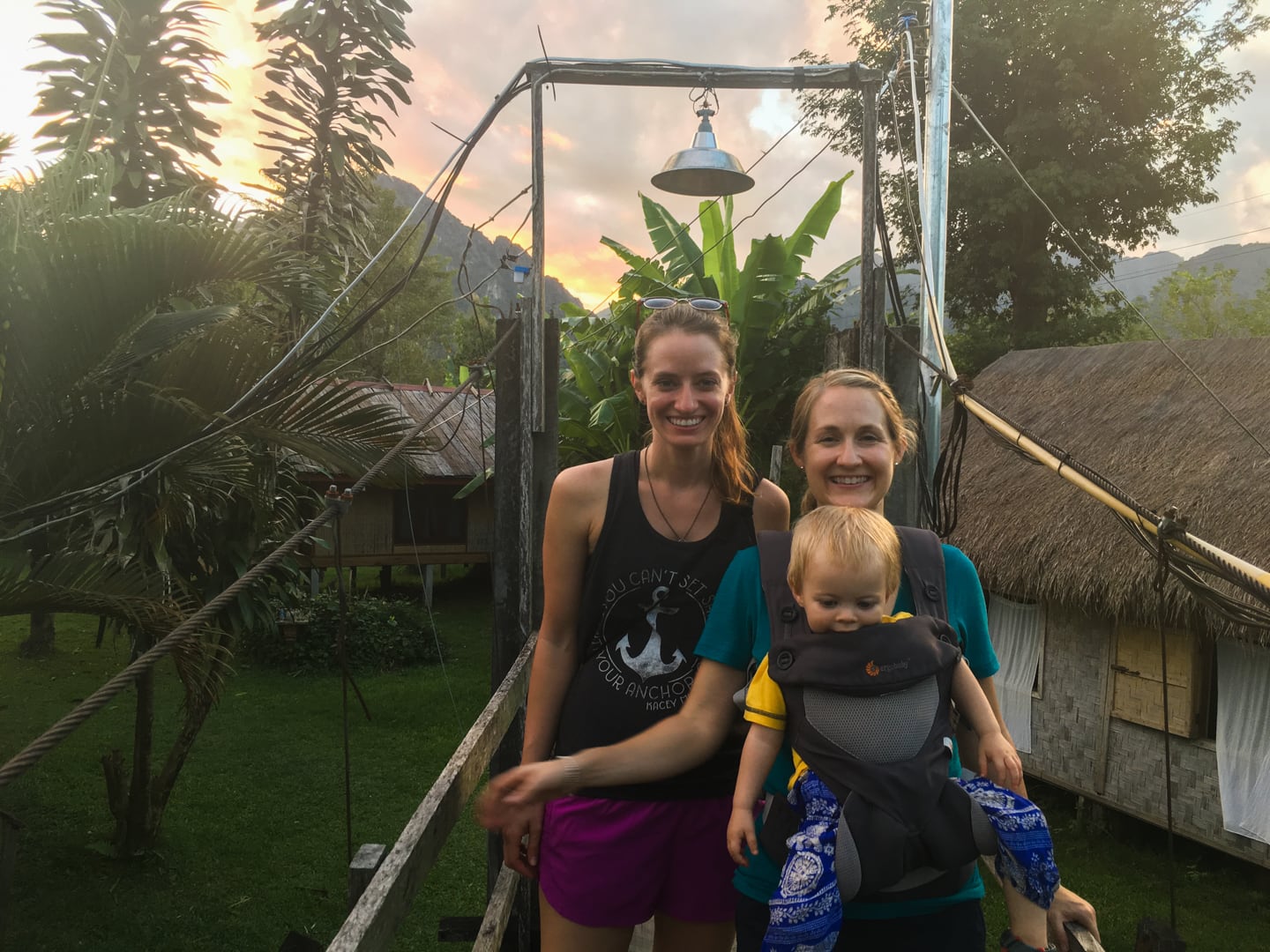
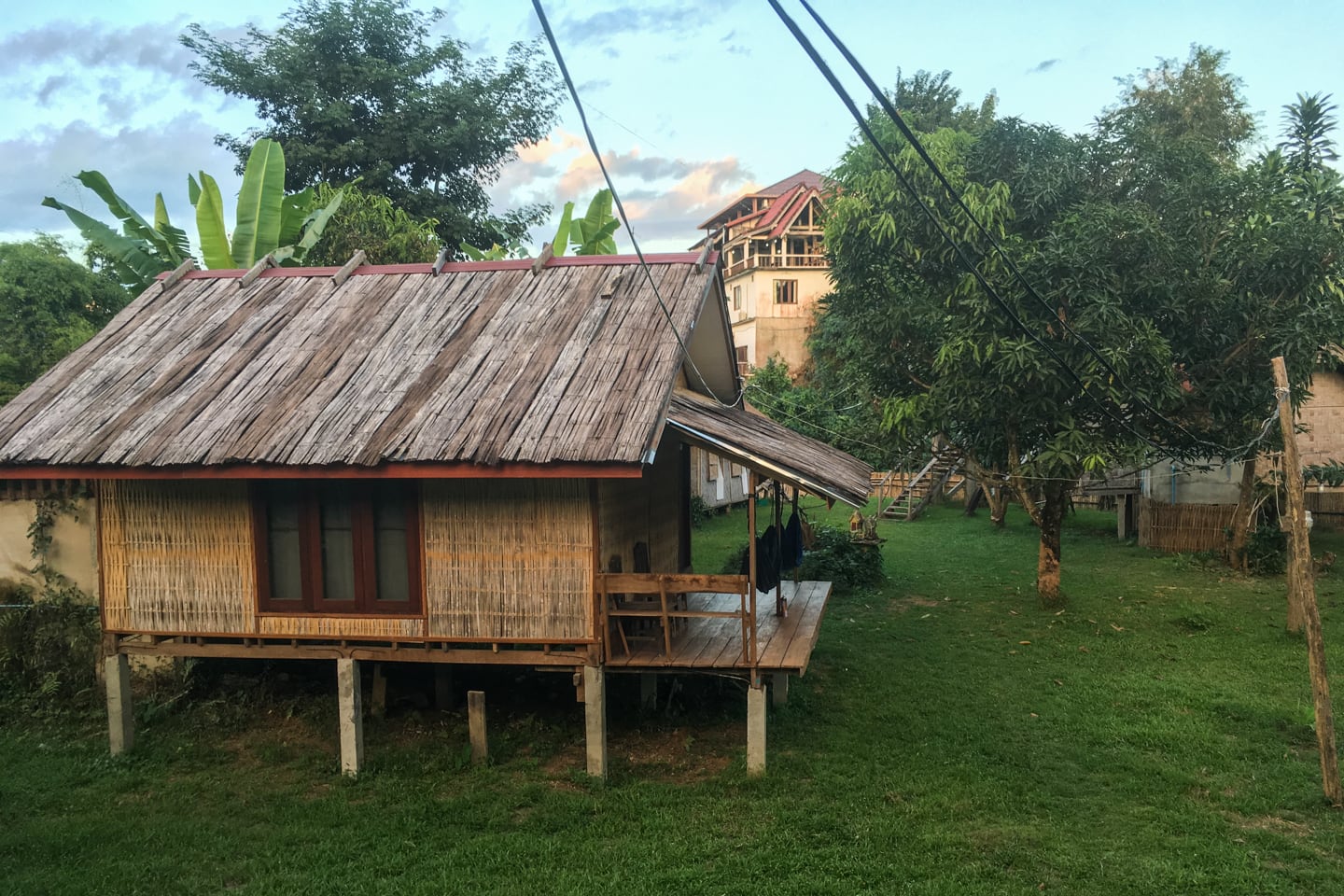

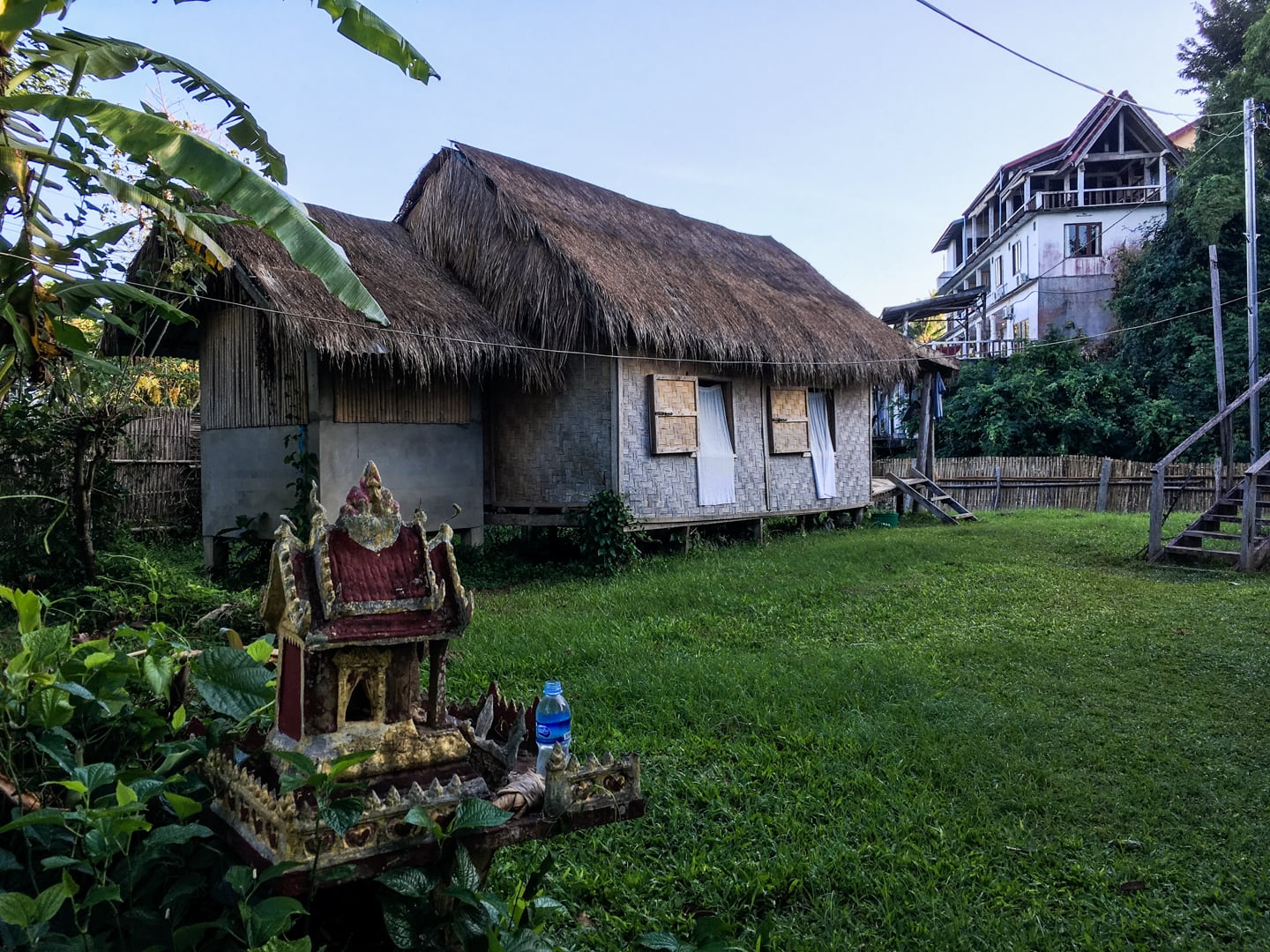
Champa’s one of the [increasingly] few rustic properties left in Vang Vieng. A decade or two ago, it was hard to find many places in town that offered more than stilted thatch bungalows—which was sort of the point for many travelers for visiting rural Laos in the first place. Of course, one can’t ignore Vang Vieng’s unique history as the one-time party capital of Southeast Asia. But what is happening in Vang Vieng is a reflection of a larger trend across the whole of Laos, and to a fair extent, the entire globe.
What makes Champa Lao such an interesting case study stems not just from the stilted thatch riverside rustic ambience, but the fact that, in late 2017, it is perhaps the single most popular properties (and consequently, one of the more pricey budget options) in Vang Vieng. A decade ago, you’d expect to find mainly European, Australian, and North American ultra-budget hippie-trail backpackers lazing away their extended stay for pennies on the dollar compared to current rates. Today, while most (mainly Asian) visitors to Vang Vieng seem content to spend their nights in newly-constructed air-conditioned cement block hotels overlooking the river, many others come to Vang Vieng hoping to relive “the old days,” paying what would have seemed exorbitant a few years back for a rustic bungalow and booking months in advance.
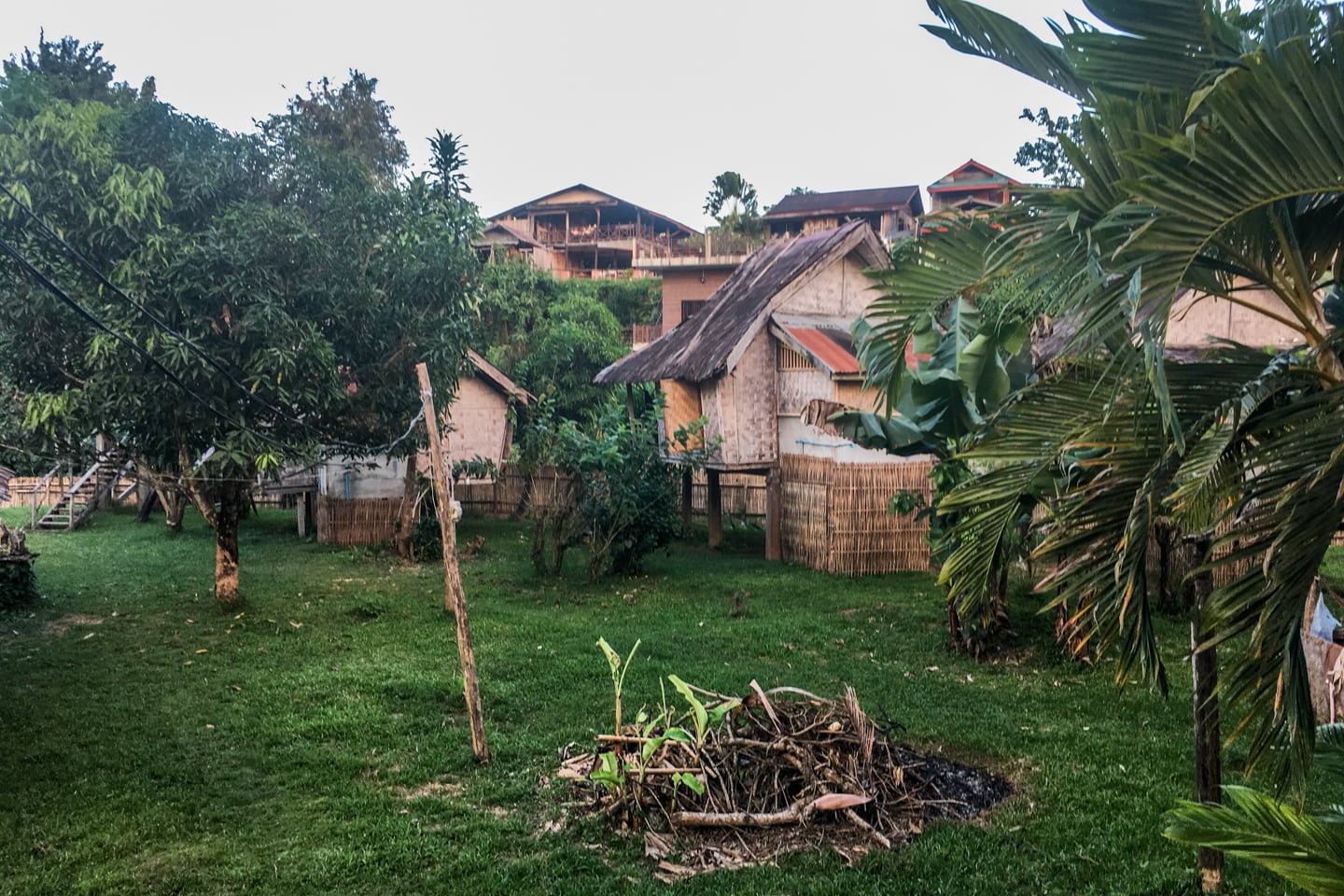
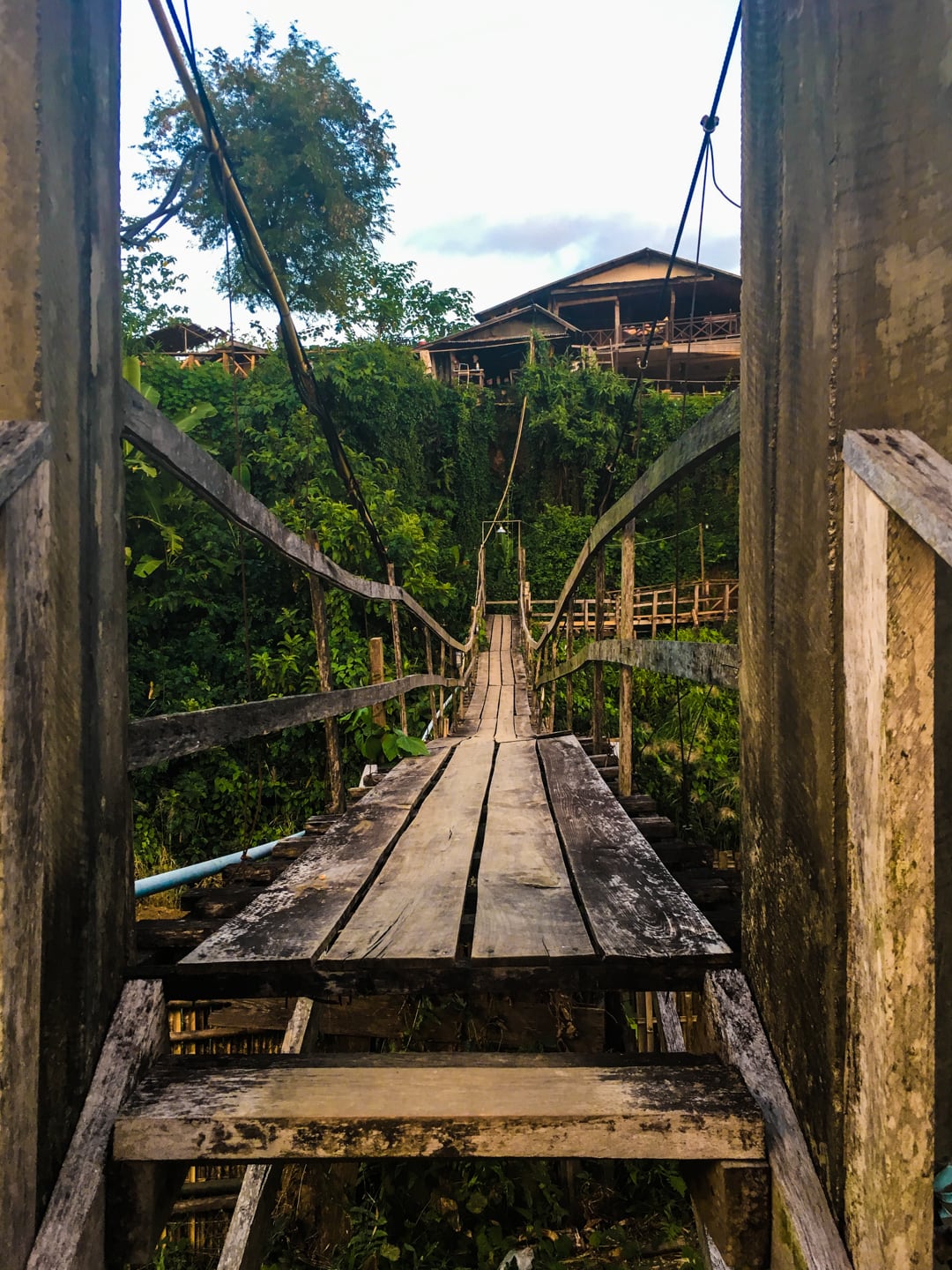
This was our fifth visit to Vang Vieng in the past year. Before our first visit, I figured staying at some place like Champa Lao in Vang Vieng was a given. After scouring the internet, and subsequently, our first trip to Vang Vieng, I was amazed to discover how unique Champa had become and how difficult it was to book a stay there. Gone are the days, apparently, where you can roll into town, dust off your backpack and dreads, and stumble barefoot into a rustic bungalow near the river in Vang Vieng. For me, personally, the greatest joy of traveling is the journey—and a big part of that is the freedom to go where the path leads, and change course when the winds shift.
More people are traveling than ever before—particularly Chinese, Koreans, Indians, Thai, and others from across Asia—great for them! But in many places around the world, the essence of what makes travel a worthy, enriching, and cross-culturally rewarding endeavor is quickly being lost to mass commercial tourism. There is a difference—the difference lies not only in the execution but the ultimate objective, and that objective is quickly becoming more self-focused and indulgent for the vast swaths visiting places like Laos today.

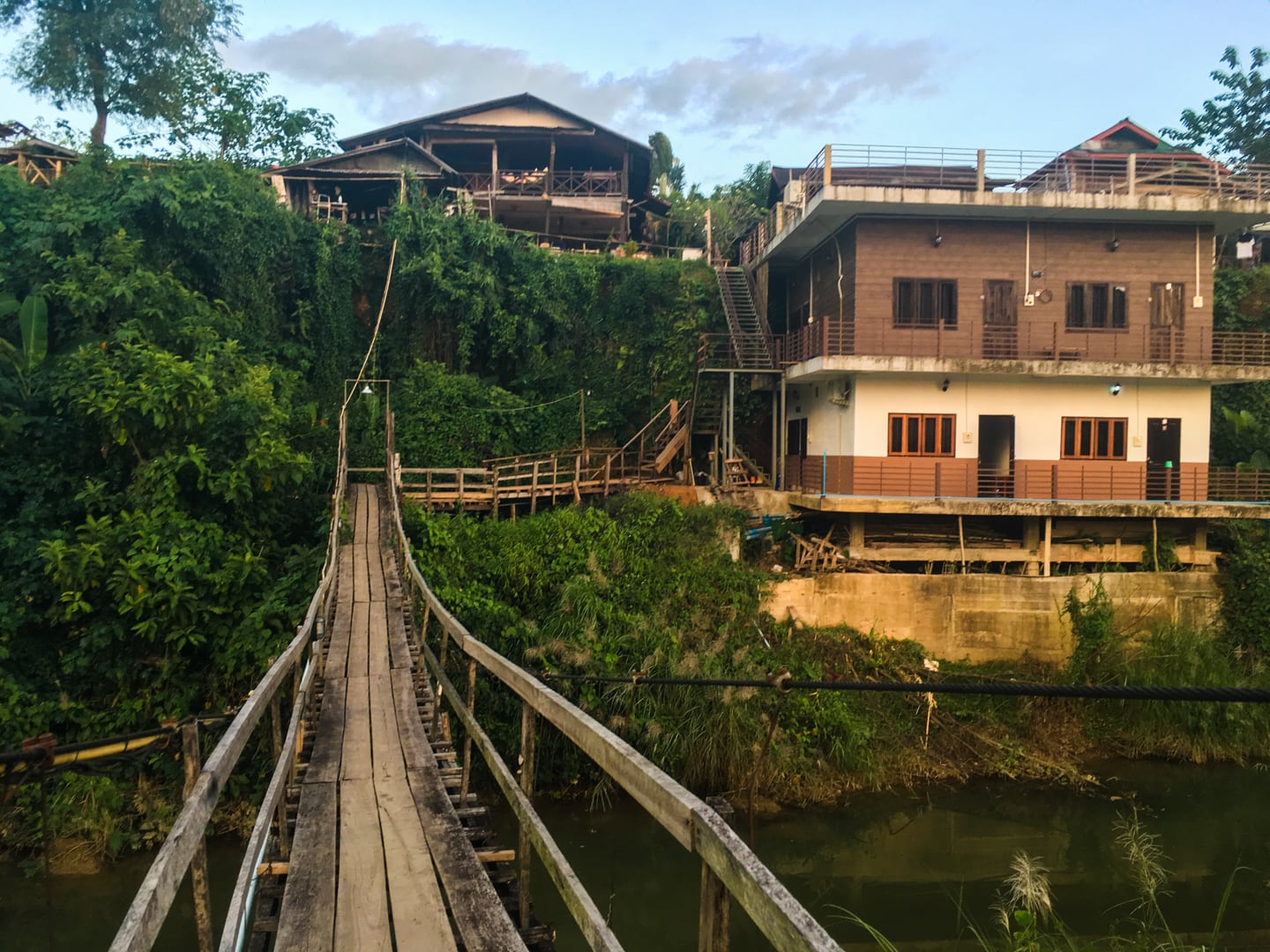
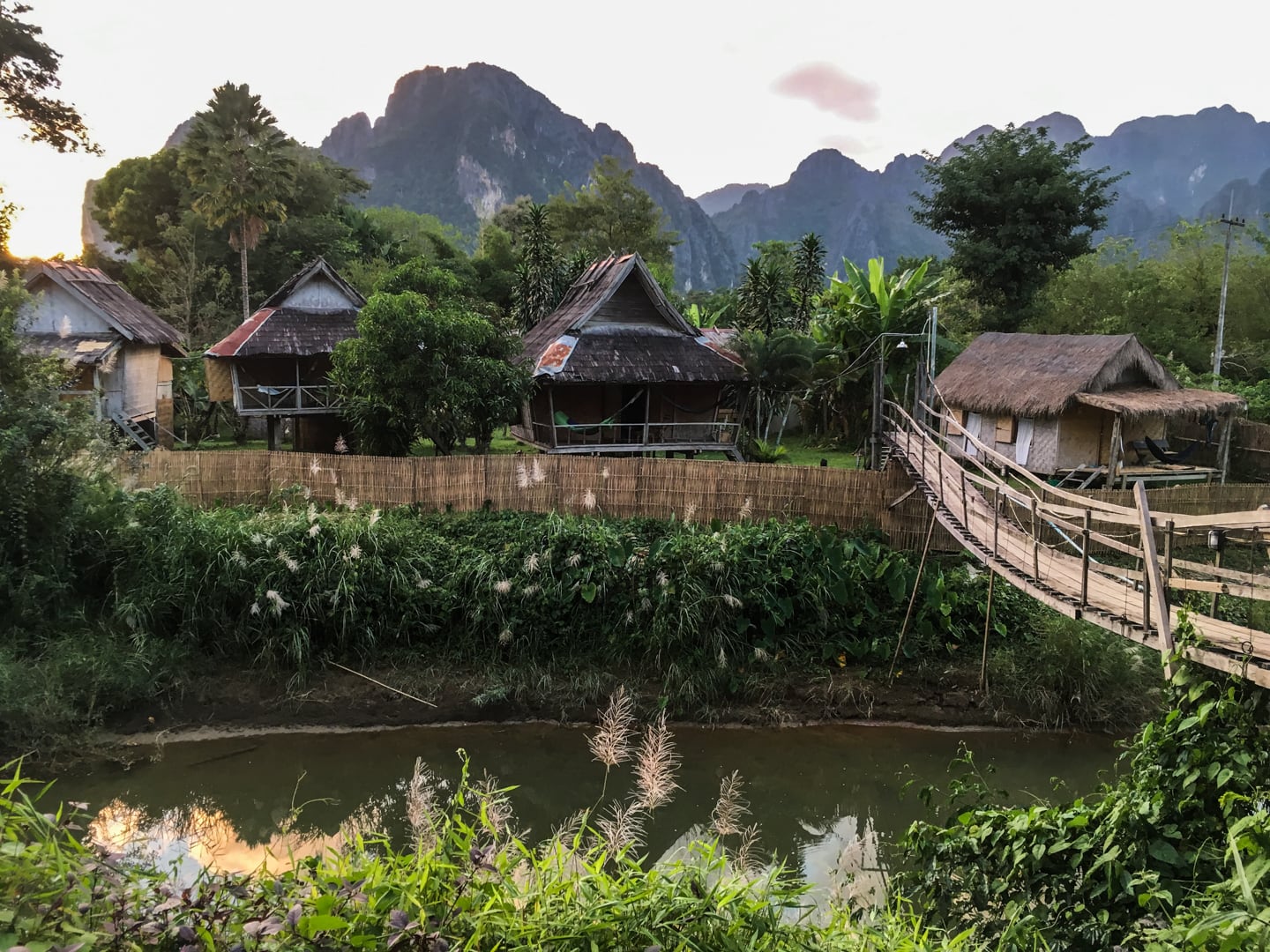
After eleven months of attempts at booking a couple nights’ stay at Champa Lao Bungalows, the planets finally aligned, and we snagged their last (and most expensive!) bungalow—booking nearly three months in advance to do so.
Was it worth the time, effort, and US$40 (per room of the 2-room bungalow)? Yes, for our purposes it was. It was exactly the type of place I’d want to stay in a place like Vang Vieng. We try our best to choose accommodation that compliments the environment around us and enhances the experience. A high-rise hotel block makes more sense to us in a densely-populated urban setting. In a more rural setting, surrounded by raw, natural beauty, we’d rather not be staring at four concrete walls every morning. With that said, $40 is steep for the area, and we rarely have the luxury of booking months in advance. Consequently, while we enjoyed our stay at Champa Lao Bungalows, we may not find ourselves staying here anytime soon.
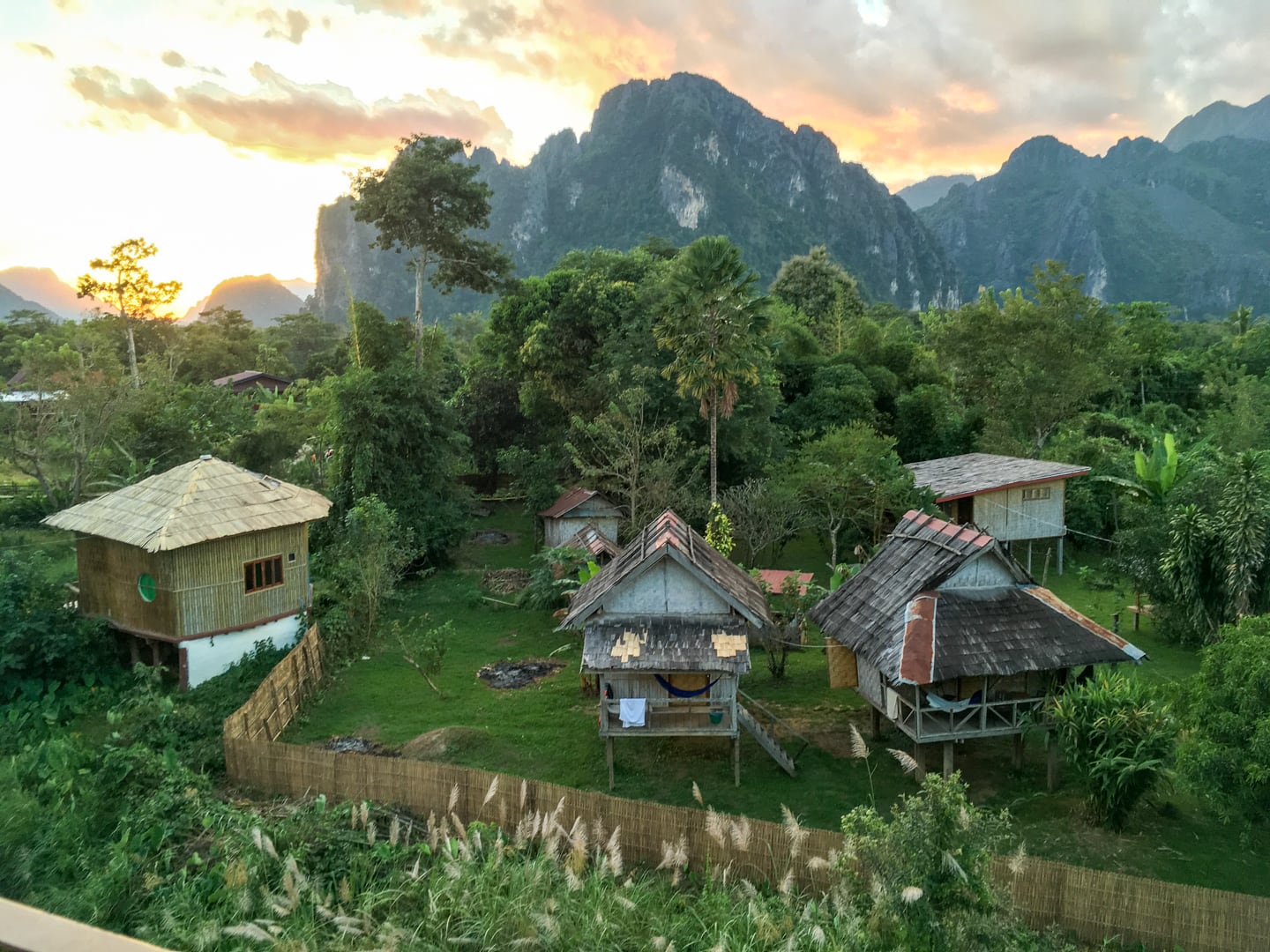
Now, a bit about our bungalow…
Each bungalow is unique and made from local materials incorporating the styles and techniques of rural housing in these parts. Unsurprisingly, the most sought after bungalows tend to be the ones closest to the water. Given that these are also fan-only bungalows (no A/C), they also tend to be cheaper.
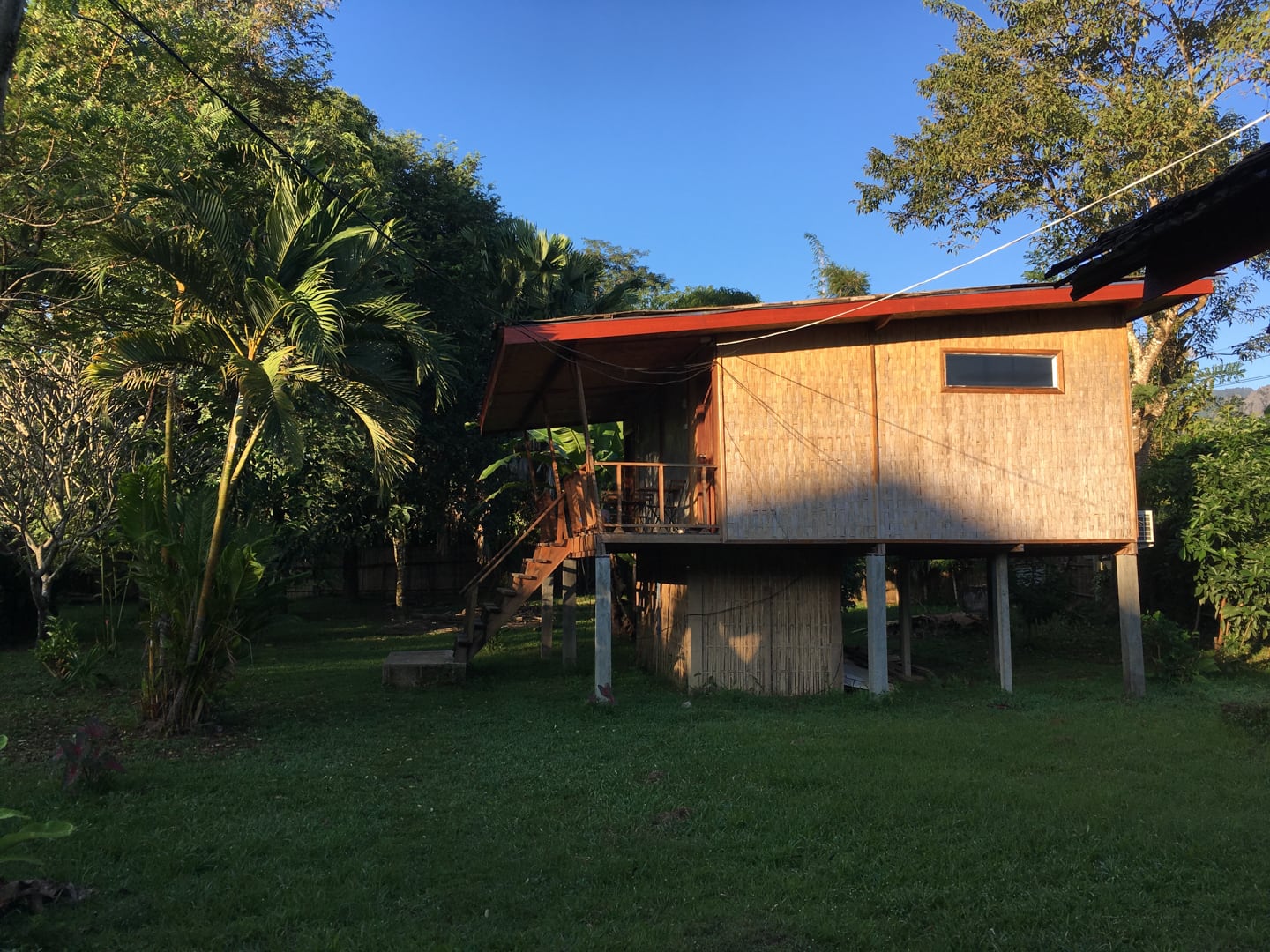
Ours was a two-room A/C bungalow towards the rear of the property. It felt quite new and was surprisingly well-appointed for a stilted bungalow.
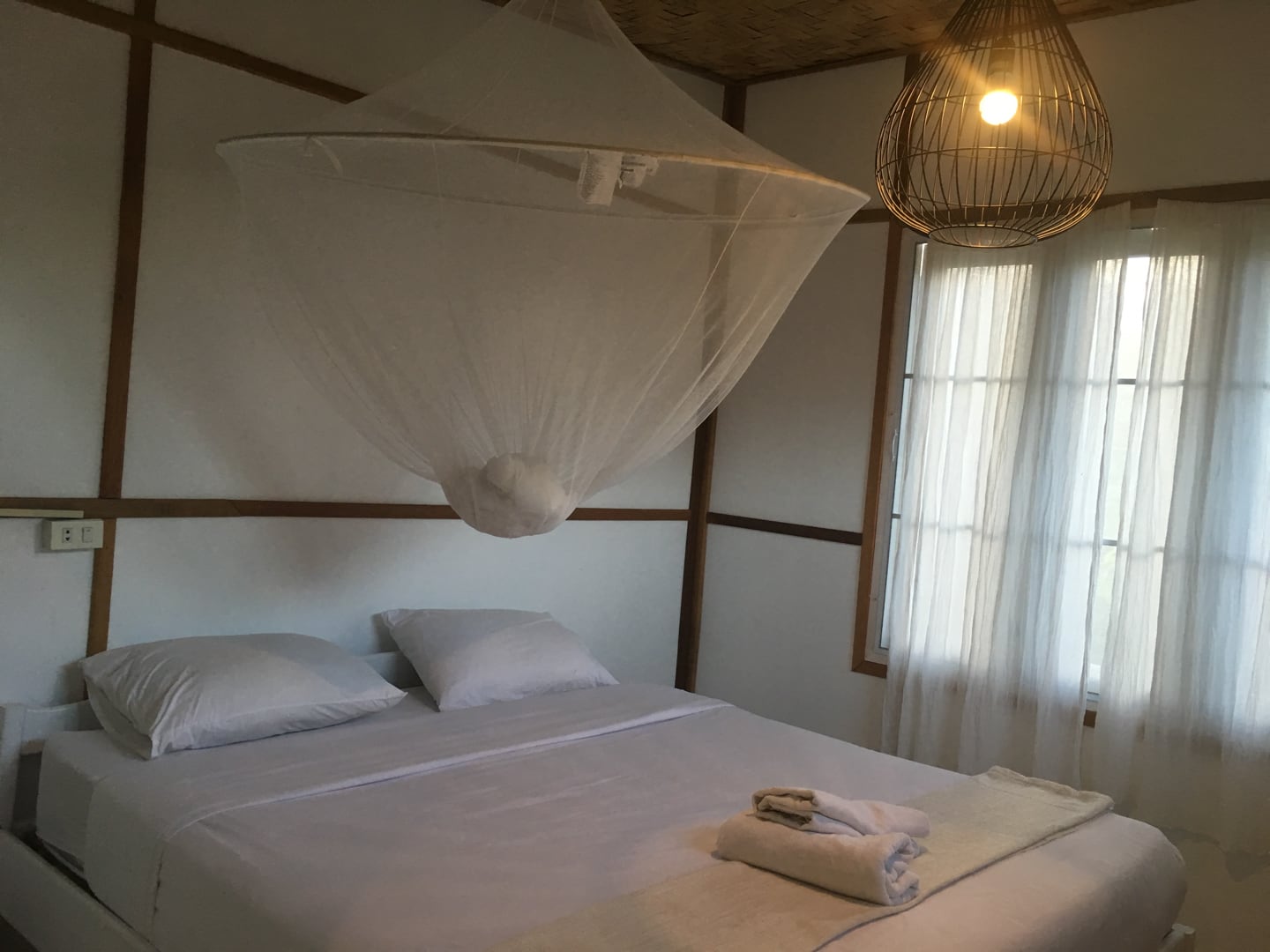
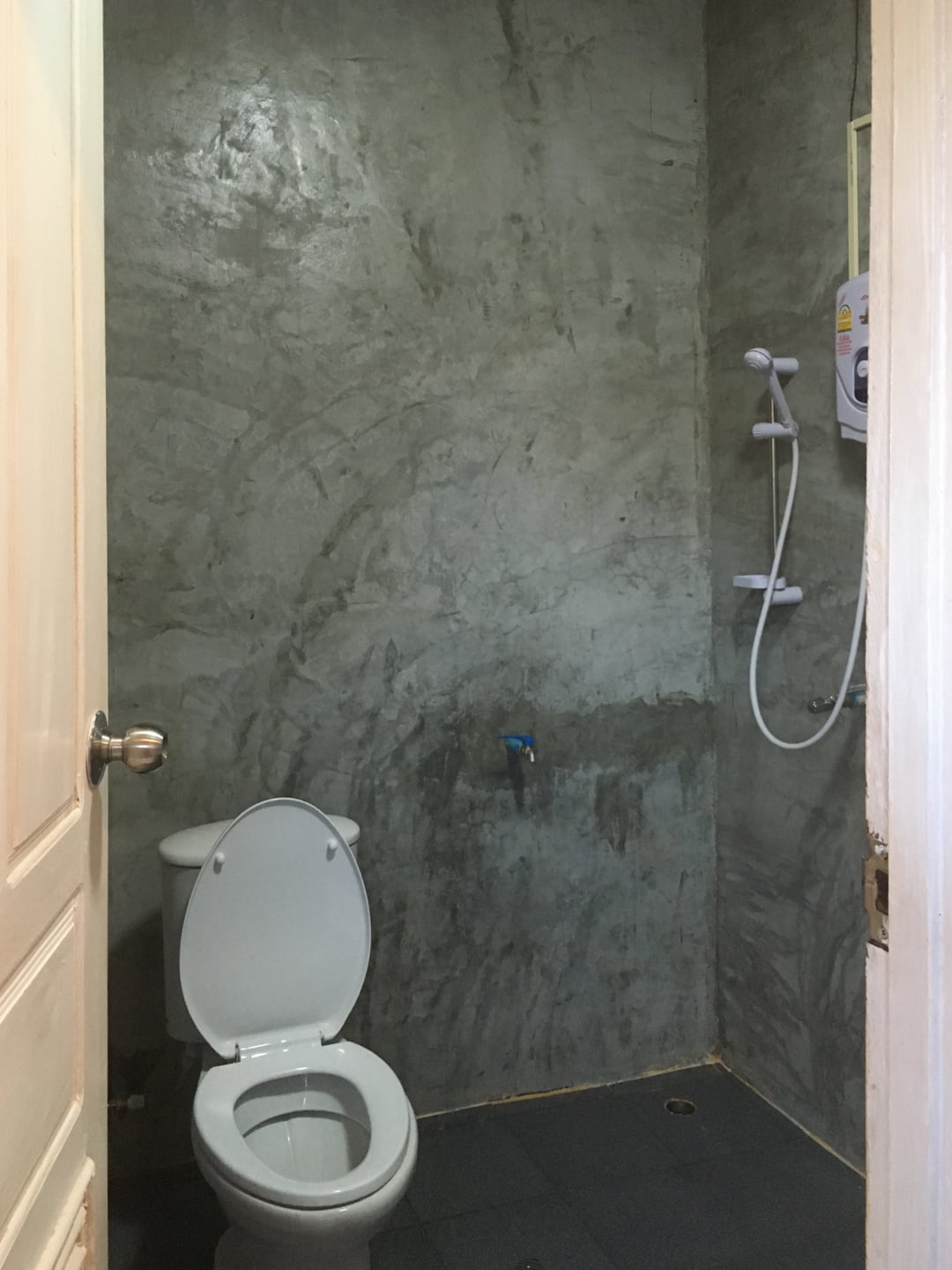
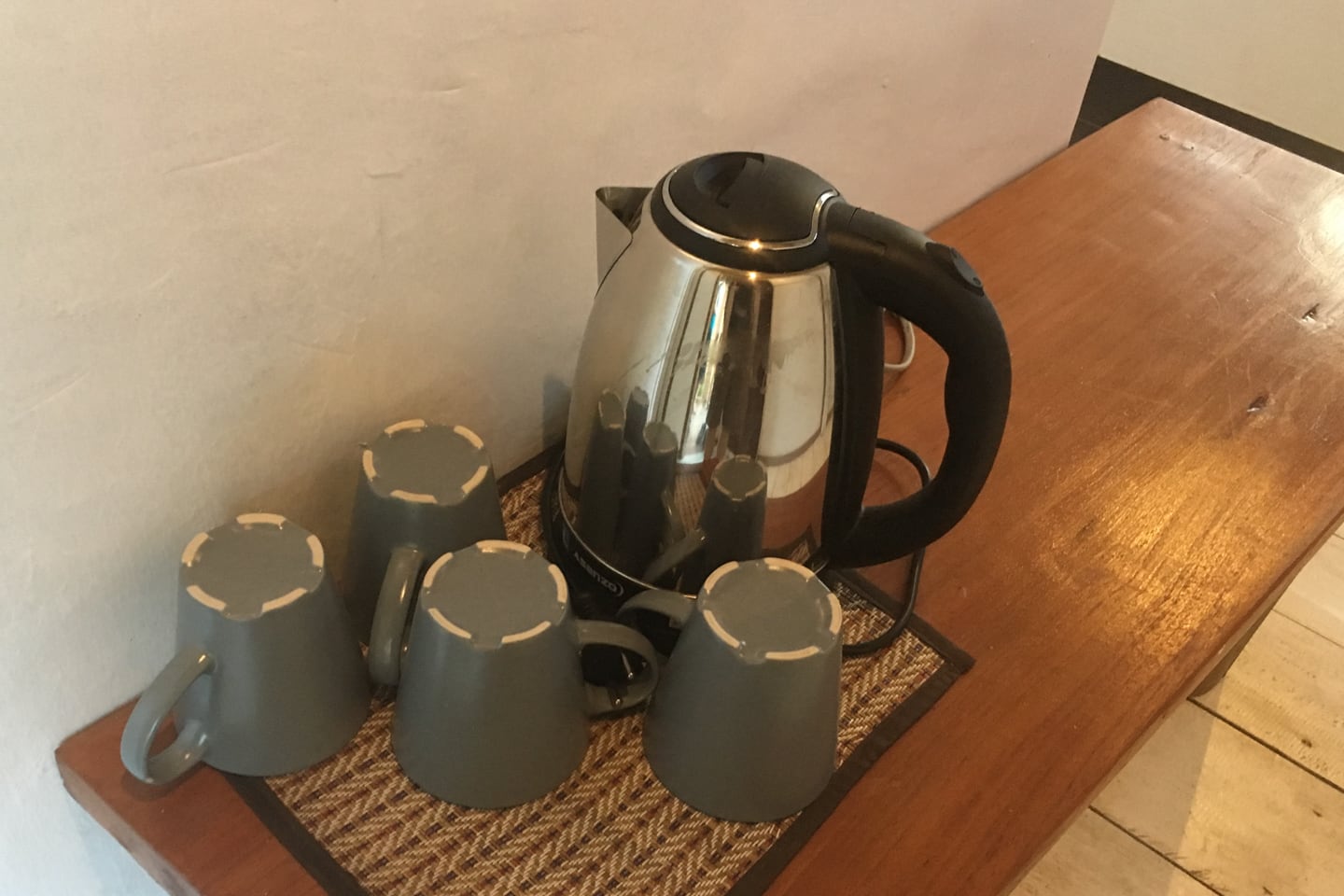
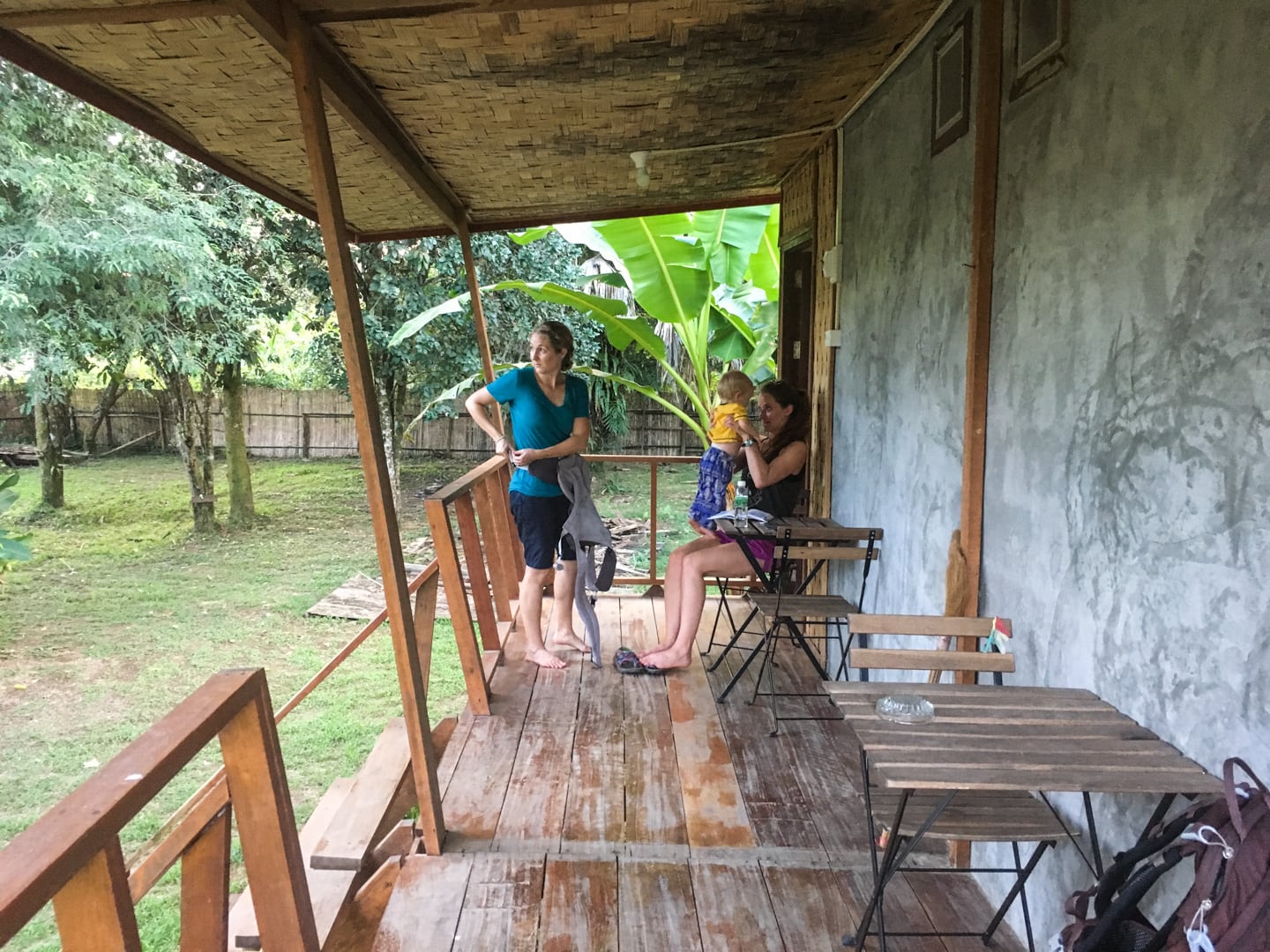
The front porch was ample for our needs but lacked the character (and the hammocks) of the other bungalows. It also wasn’t exactly what you call a toddler-friendly space, with large gaps in the railings guarding a six-foot drop off. But as with most things in Laos, you’ve got two options: Stay home or roll with it.
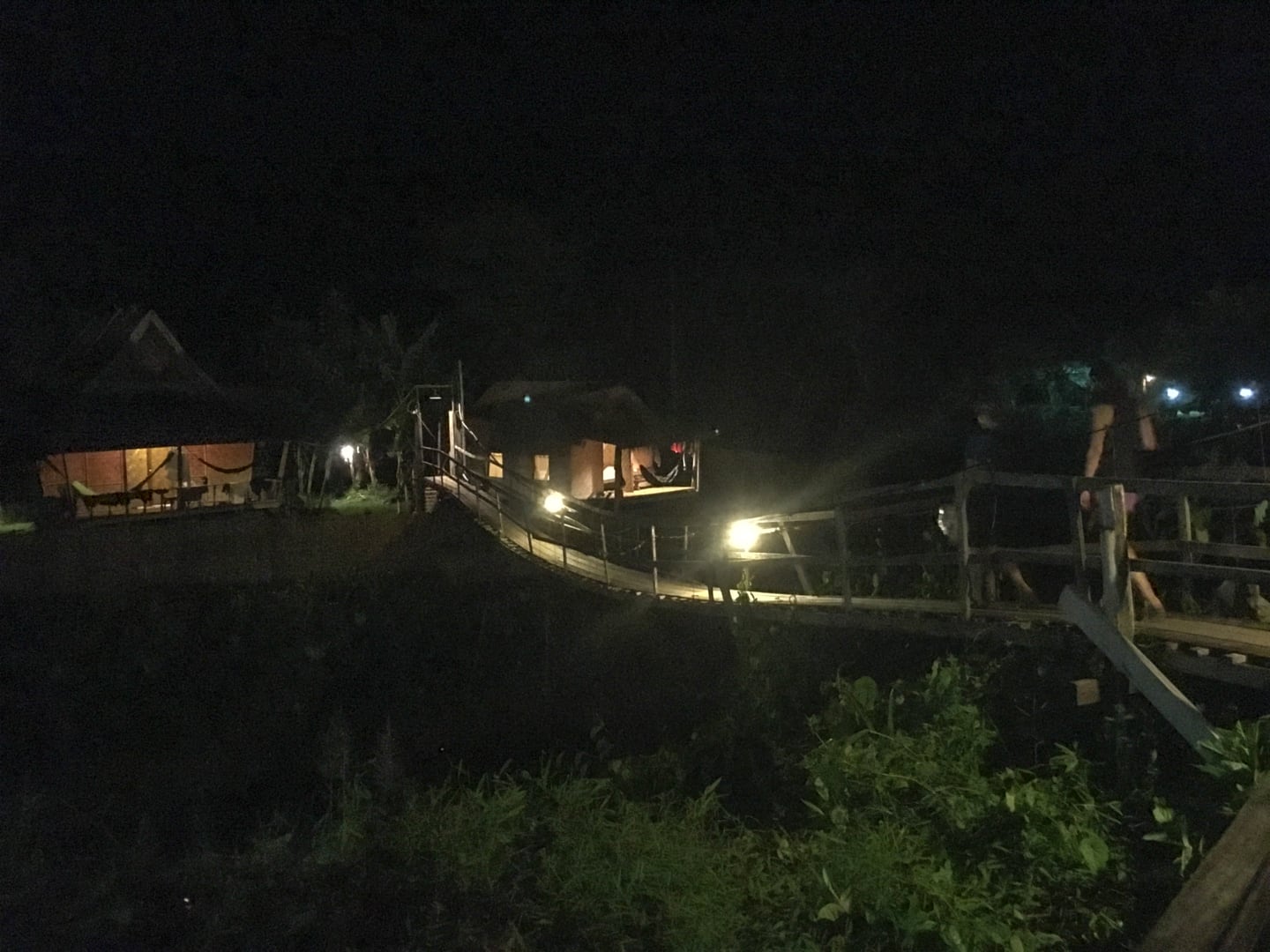
Accessing the property is a fun little adventure in itself. The reception and restaurant are located in Champa Lao Guesthouse, which is located on a bluff overlooking the valley and a short walk up the main road from the center of town. The lower section (Champa Lao Bungalows) is accessed by walking through the reception area, then descending a long set of stairs before crossing a rustic suspension bridge to access the bungalows. Smile Beach Bar, one of the most popular bars in town, is just off the rear of the property, but there is no access between the two. At first we saw this as a negative, but quickly realized the lack of access prevents foot traffic from constantly passing through the property, giving it a peaceful and secluded feel.
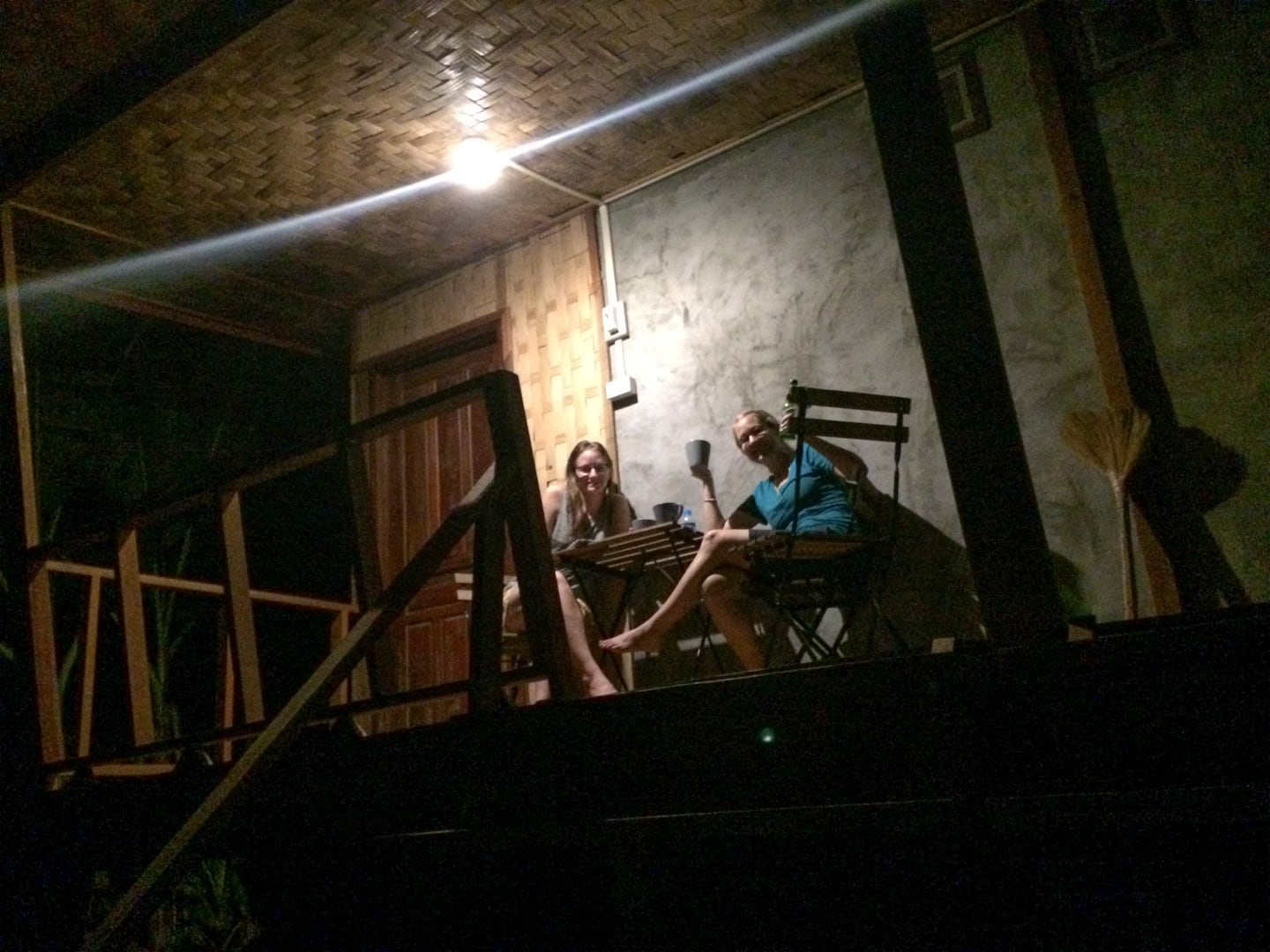
All in all, we were very happy with our stay at Champa Lao Bungalows and would recommend them to anyone visiting Vang Vieng who wants a taste of Old Vang Vieng’s rustic charm in the heart of it all and a lodging experience unlike anything else on offer in town.
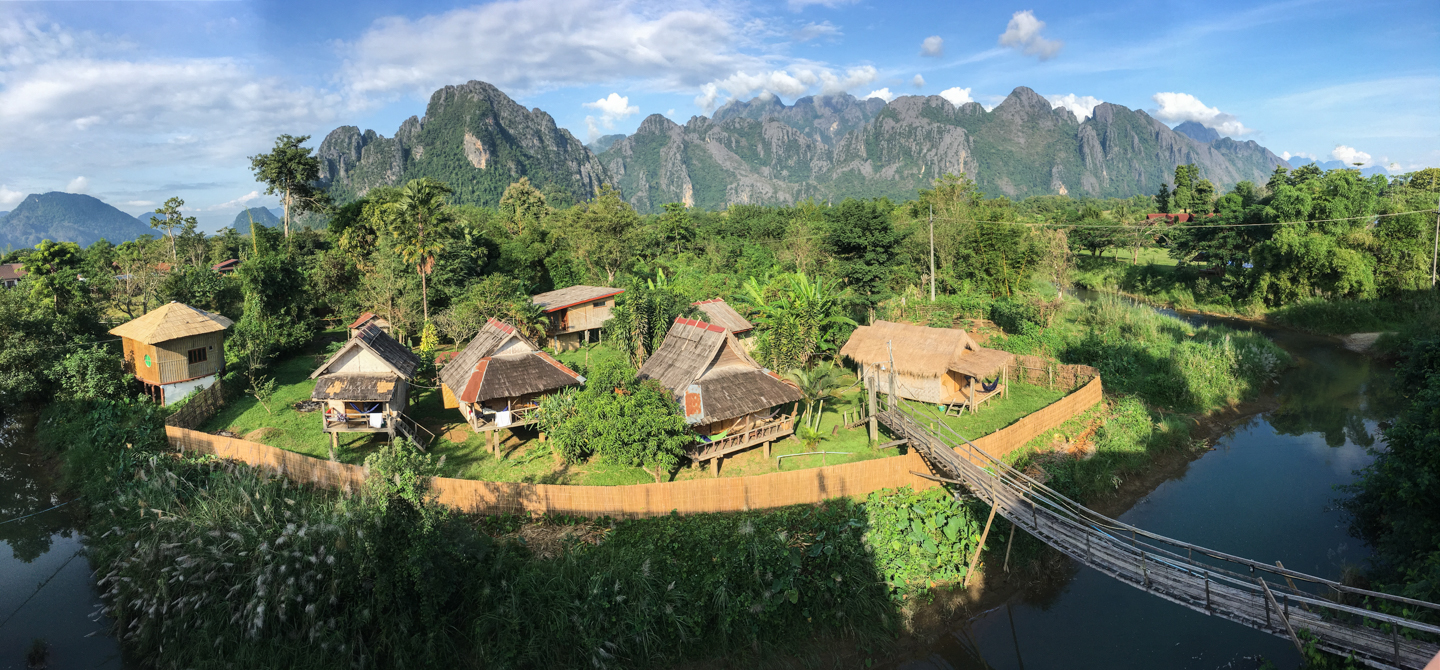
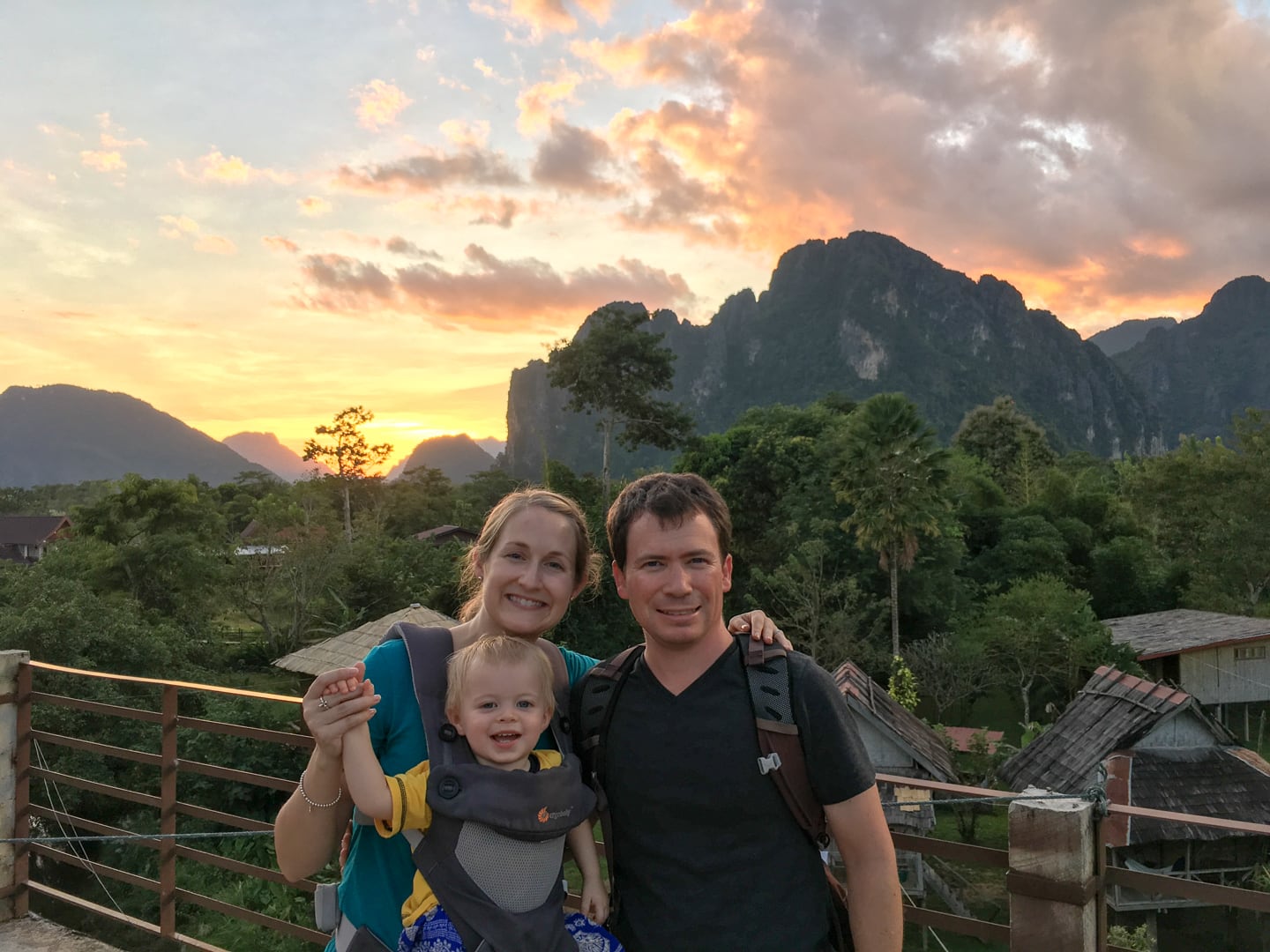
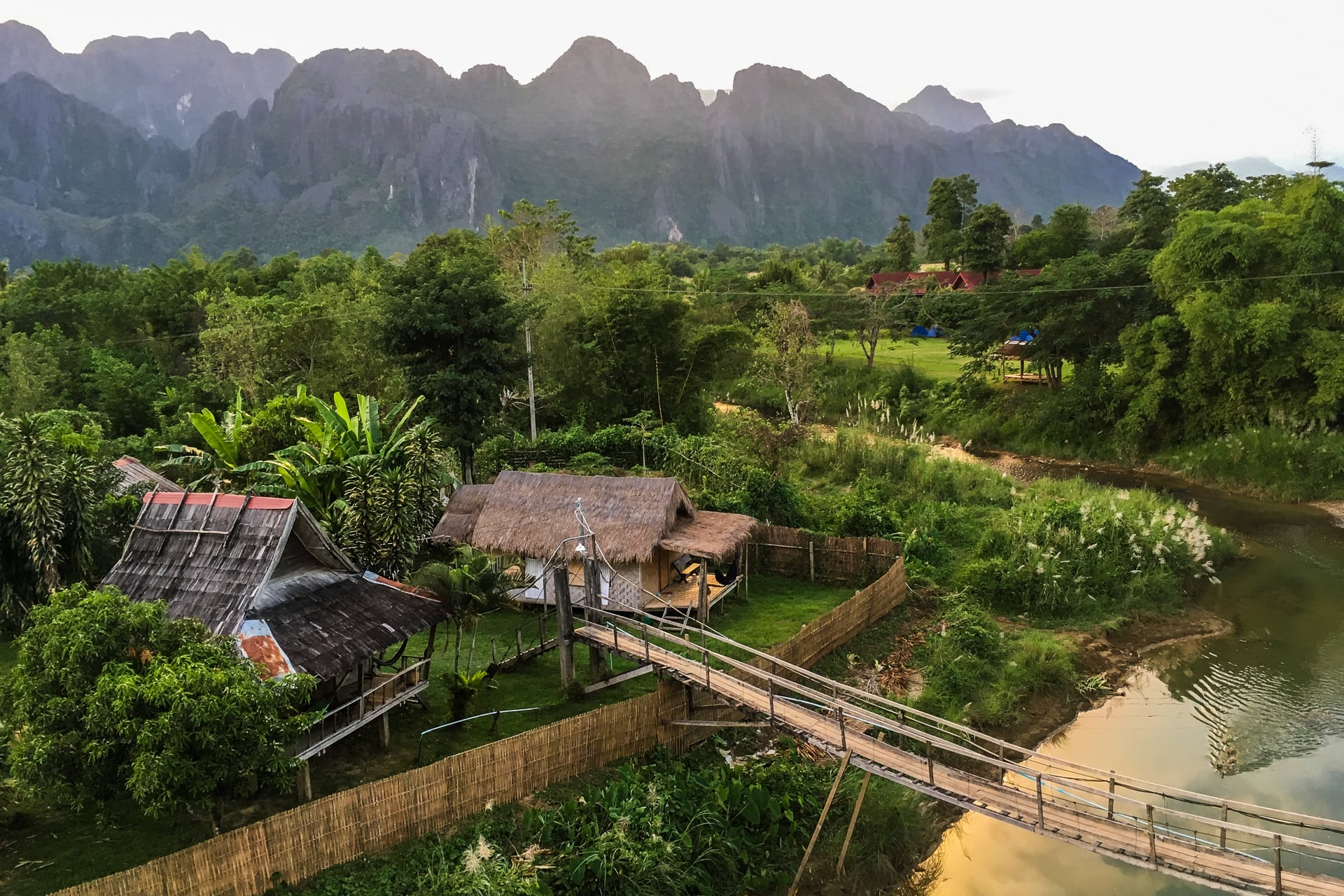
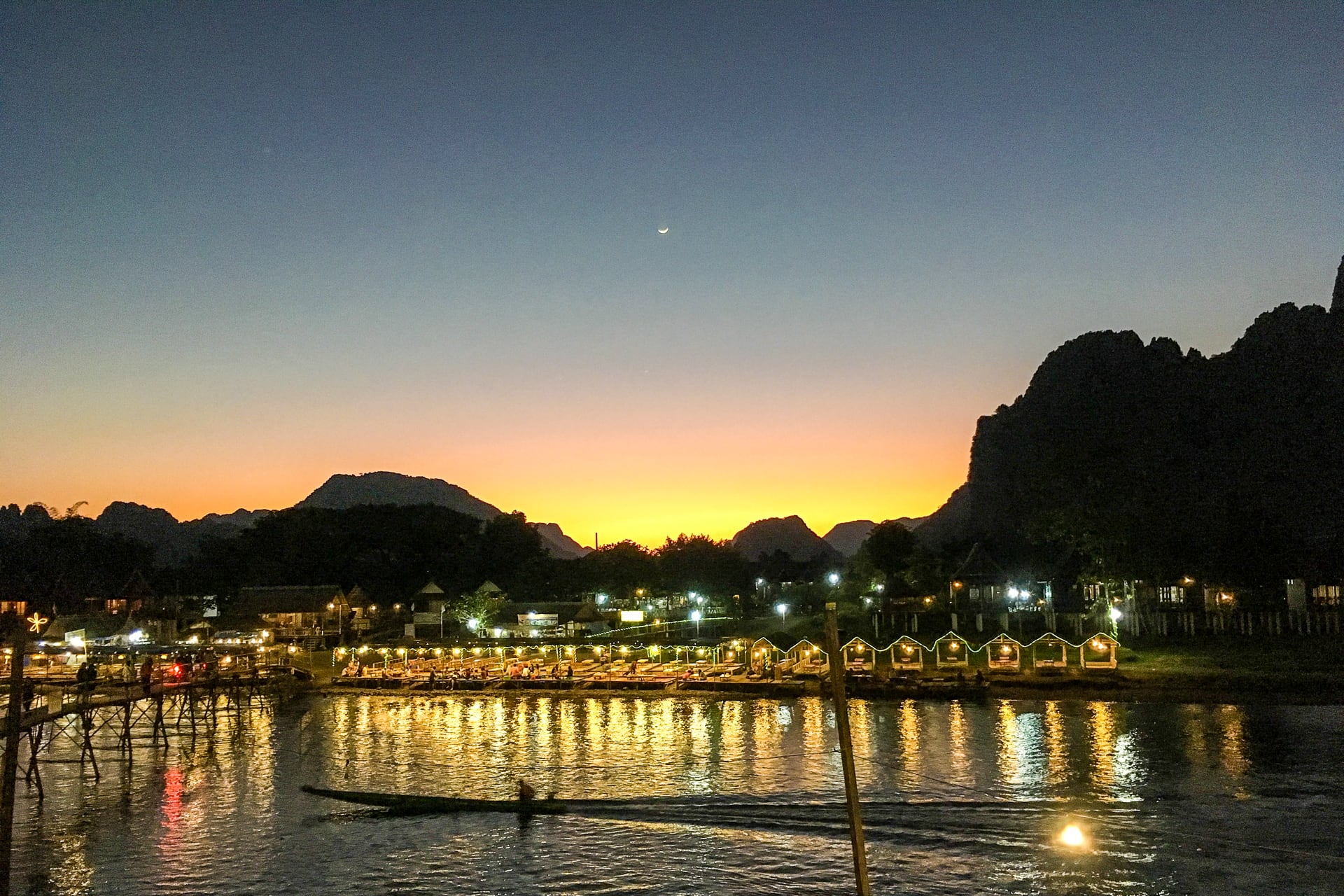
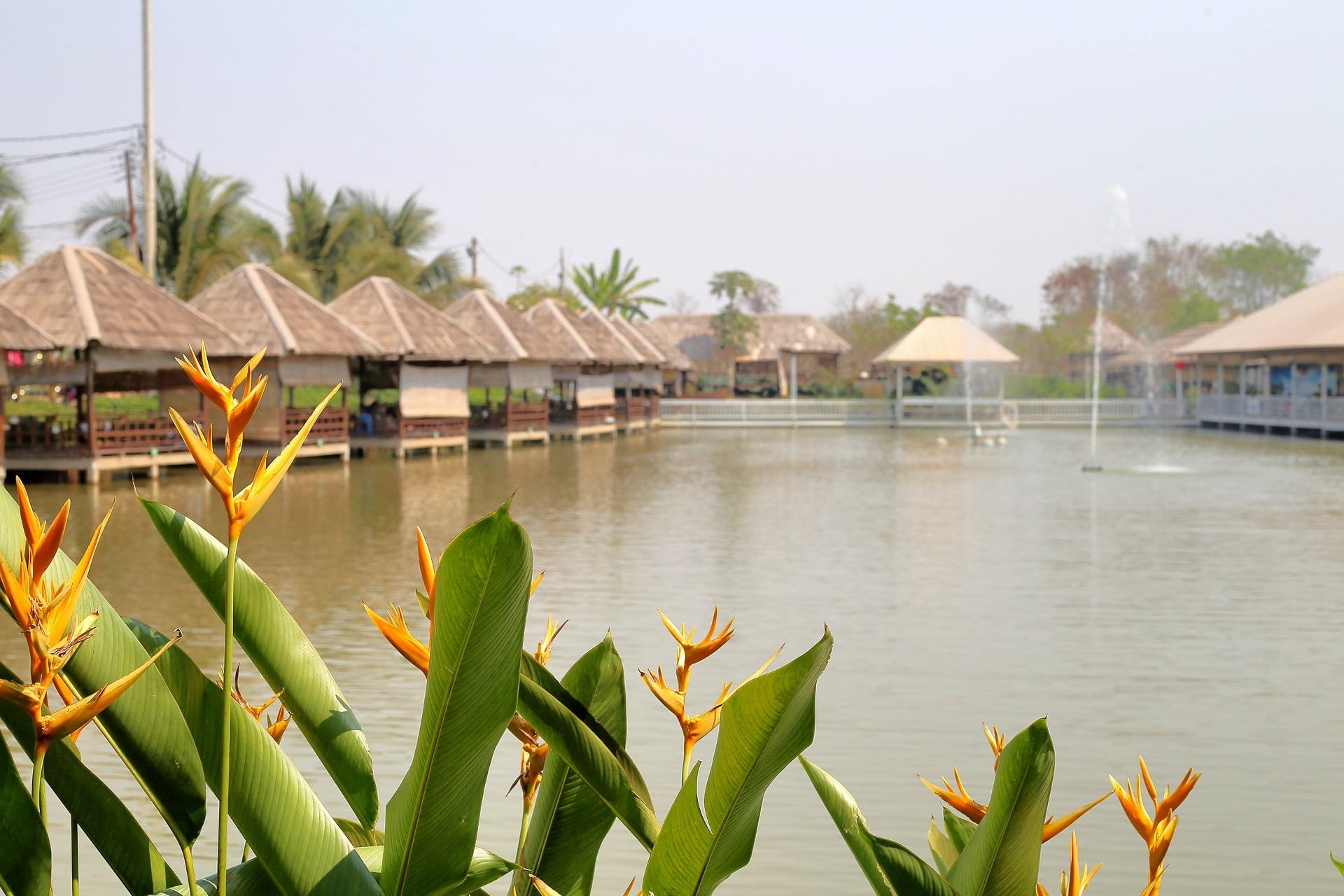
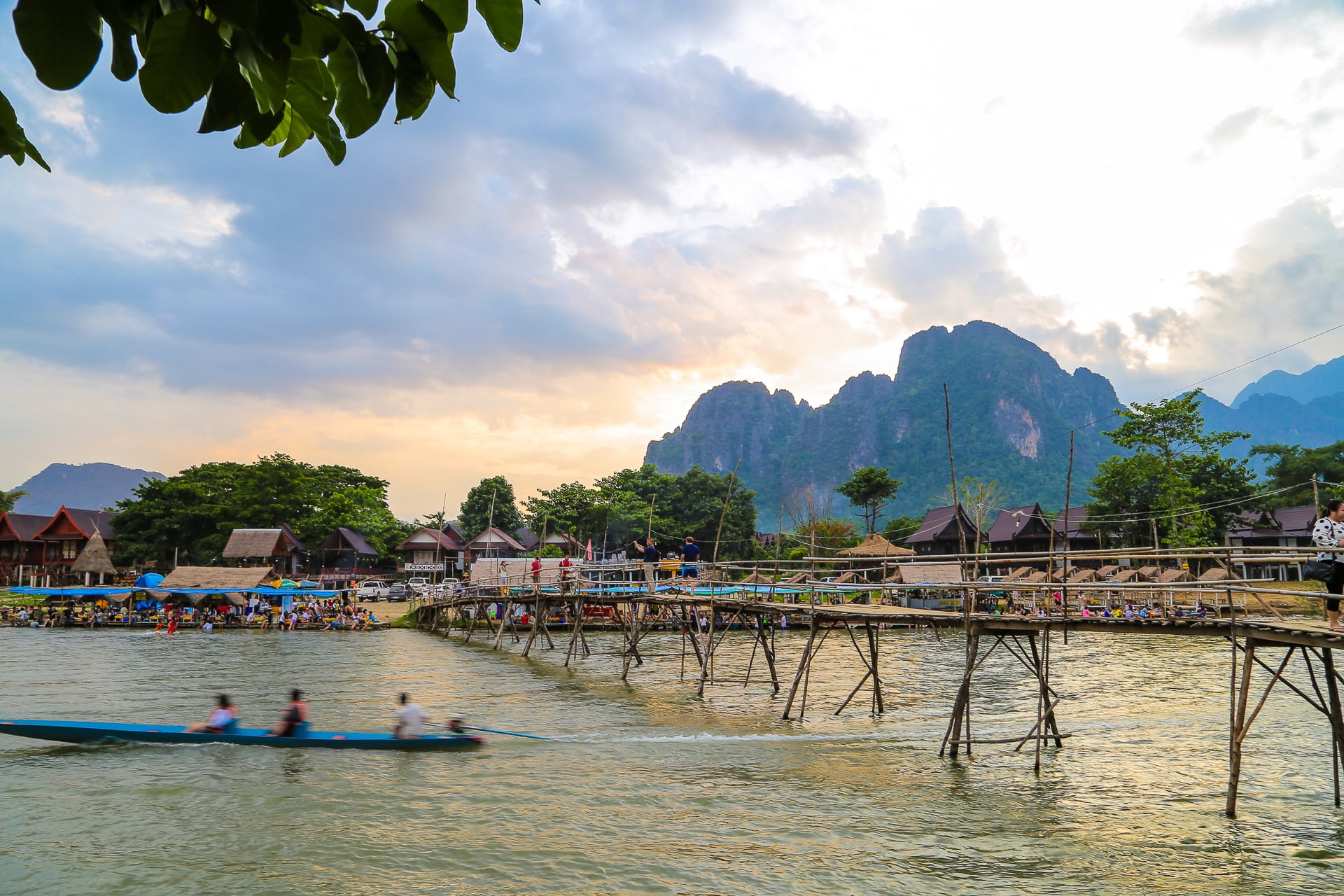
Hi Lori and David . . . I loved this post and the fantastic photos! Keep thinking this was part of the world your folks were visiting this month. If I’m correct, they’ll be heading back to Roseburg tomorrow. Bet they hate leaving you guys and little Noe! What a treasure these posts will be for Noe as he grows older and is able to read and understand where he learned to walk! Happy holidays to all. Love, Diane
Thanks Diane! We always have a great time with our visitors! Noe loves all the attention…plus getting to explore new places with new(ish) people 🙂